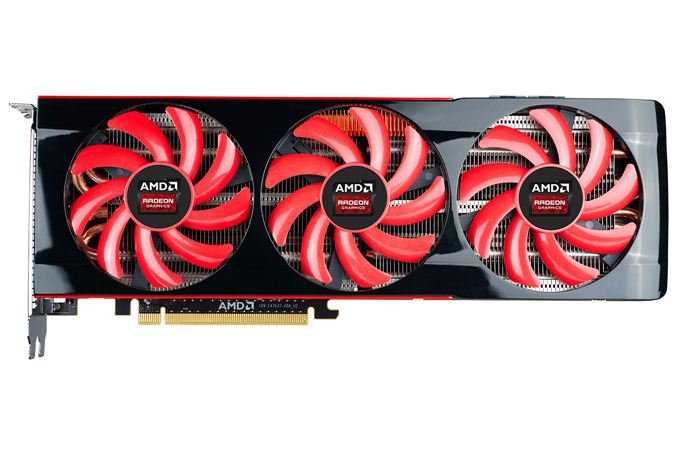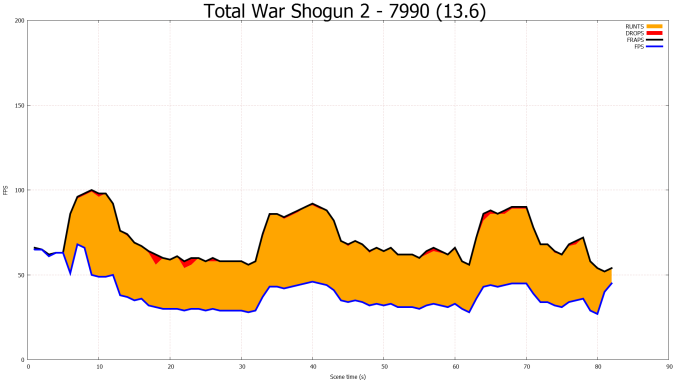AMD Frame Pacing Explored: Catalyst 13.8 Brings Consistency to Crossfire
by Ryan Smith on August 1, 2013 2:00 PM EST
In an off year that hasn’t seen too many new product releases thus far, this has been anything but a dull time. For the better part of a year now the technology journalist community – spearheaded by The Tech Report’s Scott Wasson – has been investigating the matter of frame pacing and frame timing on GPUs. In applying new techniques and new levels of rigor, Scott found that frames were not being rendered as consistently as we had always assumed they were, and that cards that were equal in performance as measured by frame rates were not necessarily equal in in performance as measured by frame intervals. It was AMD in particular who was battered by all of this work, with the discovery that both their single-GPU and multi-GPU products were experiencing poor frame pacing at times. AMD could meet (and beat) NVIDIA on frame rates, only to lose out on smoothness as a result of poor frame pacing.
Since then we have seen both some progress and some new revelations on these matters. AMD was very quick to start working on resolving their single-GPU issues, and by March when they were willing and able to fully engage the tech community, they had already solved the bulk of those single-GPU issues. With those issues behind them, they also laid out a plan to tackle the more complex issue of multi-GPU frame pacing, which would involve spending a few months to write a new frame pacing mechanism for their cards.
At the same time NVIDIA also dropped a small bombshell with the public release of FCAT, their long in development frame interval benchmarking tool. FCAT could do what FRAPS alone could not, capturing and analyzing the very output of video cards to determine frame rates, frame times, and frame intervals. Though FRAPS was generally sufficient to find and diagnose single-GPU issues, FCAT shed new light onto AMD’s multi-GPU issues, painting a far more accurate – and unfortunately for AMD more dire picture of Crossfire frame pacing.
Perhaps as proof that there’s no such thing as coincidence, since then we have seen the release of AMD’s latest multi-GPU monster, the Radeon HD 7990. Packing a pair of high clocked Tahiti GPUs, the 7990 was AMD’s traditional entry into the realm of $1000 multi-GPU super cards. A capable card on paper, the 7990 has been at the mercy of AMD’s drivers and lack of a frame pacing mechanism, with the previous revelations and FCAT results causing the 7990 to suffer what can only be described as a rough launch.
Ultimately when AMD engaged the community back in March they had a clear plan for addressing their multi-GPU frame pacing issues, developing a new frame pacing mechanism for their cards. AMD stated outright that this work would take a few months, something of an arduous wait for existing Crossfire users, setting a goal that the new frame pacing mechanism would “come in or around a July driver drop.” July has since come and gone by a day, but at long last AMD has completed their initial work on their new frame pacing mechanism and is releasing the first public driver today at 2pm ET as Catalyst 13.8 Beta 1.
As part of today’s launch activities, AMD seeded the beta driver to the press a week in advance to give us a chance to put it through the necessary paces, give AMD feedback, and write up about our experiences with the new driver. Over the next several pages we’ll be going over what changes AMD has made to their drivers, how they impact the 6 games we do frame interval testing with, and ultimately whether AMD has made sufficient progress in resolving their frame pacing issues. Make no mistake: AMD wants to get past these frame pacing issues as quickly as possible and remove the cloud of doubt that has surrounded the 7990 since its launch, making this driver launch an extremely important event for the company.











102 Comments
View All Comments
chizow - Friday, August 2, 2013 - link
Agree for the most part, but I wouldn't go as far to say boycott AMD, I'd say it's a good learning experience for AMD fans. In order to better their own products, they need to be forthcoming and honest about their experiences. If something's broken, demand a fix, don't sit there and dismiss or minimize the problem, or worst, deflect the issue toward the competition in denial. In the end, they just end up hurting themselves by gimping the products they enjoy.Will Robinson - Tuesday, August 13, 2013 - link
Please go back to spamming the comments section at Tech Report with your NVDA shill buddy Wreckage.Its beyond boring having to read it here too.
chizow - Friday, August 2, 2013 - link
Tom Petersen, Technical Marketing Director for Nvidia, has stated Nvidia has had built-in frame metering provisions since at least G80. Nvidia invented modern day AFR and they have clearly put a lot of thought behind it with the science to back it up. Every time you see them talk about AFR/microstutter/runtframes you see a lot of detailed technical slides and backup. Not so much from AMD. It should be obvious why Nvidia has had less of an issue with microstutter, they actually knew what they were looking to fix.http://techreport.com/review/22890/nvidia-geforce-...
"Nvidia's Tom Petersen threw us for a loop by asserting that Nvidia's GPUs have had, since "at least" the G80, a built-in provision called frame metering that attempts to counteract the problem."
Sabresiberian - Thursday, August 1, 2013 - link
Tech Reports is a competing company to AMD?While it is very good to see AMD making progress here, it is far from over for both AMD and Nvidia. Both companies have work to do to get frame rates to be consistent and high.
BryanDobbins - Saturday, August 17, 2013 - link
my neighbor's mom makes $72/hour on the internet. She has been unemployed for 7 months but last month her pay check was $19114 just working on the internet for a few hours. Read more on this web site... http://goo.gl/qHdAQ4Mondozai - Thursday, August 1, 2013 - link
Always liked Ryan's articles but I hope he gets to write more for this site in the future. For example, he should write more about mobile GPU's now that that area is gaining importance(this year we get to see PowerVR's newest generation, Rogue and next year we get to see Kepler in Tegra 5). Yet he didn't write anything on Tegra 5's Kepler story on this site even if he is the expert on GPU's.Doing a story on AMD drivers is all well and good but honestly, would like to see moar.
Ryan Smith - Thursday, August 1, 2013 - link
We have some in-depth mobile coverage scheduled for later this year, though I can't go into any more detail on it at this moment.mwildtech - Thursday, August 1, 2013 - link
Great write up! Thanks Ryan!SeeManRun - Thursday, August 1, 2013 - link
It wasn't totally clear from reading, but is there any point in upgrading to this driver if you have a single graphics card? It doesn't appear so.DanNeely - Thursday, August 1, 2013 - link
Release notes aren't out yet; but the 3rd page mentions that it adds full OpenGL ES 3.0 support as well as other not yes specified improvements. Most likely they include the obligatory few games to get a performance boost; but it's not purely a crossfire update.